Morocco is a country that offers visitors an authentic culinary experience, where they can taste the richness of the country’s history and culture. A great way to explore the local food scene is to hit the streets and indulge in the vast array of street food. Street food is an integral part of the Moroccan culinary scene, where locals and tourists alike can enjoy a variety of delicious and affordable dishes. The smell of freshly baked bread, the sizzling of spices, and the aroma of charcoal-grilled meats waft through the air, inviting you to try the delicacies on offer.
The colourful food stalls that line the streets are bustling with activity, and the vendors are always ready to offer a warm welcome and a taste of their specialty. The country’s diverse culinary offerings are a result of its location, with influences from the Mediterranean, Middle East, and Africa. Moroccan street food is a perfect representation of the country’s magic, with its fusion of flavours and textures, offering a unique experience for the adventurous foodie. Moroccan street food is sometimes overshadowed by its famous tagines and couscous. However, those who take the time to explore the streets and alleyways of Morocco will discover a hidden gem of delectable street food. From the bustling food markets of Marrakesh to the seaside stalls in Essaouira; each region of the country has its own unique specialties and flavours, so there is always something new and exciting to try right around the corner… Here are some of the most popular street food dishes in Morocco and some tips on where to find them!
Vegan and Vegetarian Moroccan Street Food Options
Sfenj:
Sfenj is a type of fried doughnut that is typically served with honey or jam. The dough is made from flour, yeast, and water, and is fried until it’s crispy on the outside and soft on the inside. The doughnuts are often served hot and fresh, and they’re a popular breakfast food in Morocco. Keep a lookout for Sfenj’s close cousin, “beignet chaud”, a doughnut that’s a little fluffier, with drizzled sugar, you will typically find these in and around beaches.

Bissara:
Moroccan bissara is a traditional soup made from dried fava beans that is particularly popular in the winter months. The dried fava beans are soaked overnight, then boiled with water, garlic, and olive oil until they are soft and fully cooked. The soup is then pureed until it reaches a smooth and creamy consistency, and seasoned with salt, cumin, and paprika. Bissara is typically served hot, garnished with olive oil. Bissara is a hearty and nutritious soup that is a staple of the Moroccan diet. It is often enjoyed as a breakfast dish but can also be served as a main course or as a side dish and is accompanied by crusty bread and olives. Another version of bissara you can find in the north is similar but made with green peas instead, this is referred to as “bayssar” by connoisseurs!
Lentil Soup:
Lentil soup is another staple of Moroccan street food, the lentils are cooked in a sauce prepared using onions, garlic, and tomatoes in a fragrant blend of spices including cumin, paprika, and chili powder. Once the sauce has thickened, the cooked lentils are added to the pot and simmered together with the sauce for a few minutes to allow the flavors to meld. The dish is hearty and filling, yet also light and healthy, making it a popular choice for lunch or dinner around Morocco.
Harira:
Harira is a soup that is made with tomatoes, lentils, chickpeas, and spices. It’s a popular dish in Morocco, especially during Ramadan, when it’s often served to break the fast. The soup is sometimes made with lamb or beef, and is flavoured with a blend of spices, including ginger, cinnamon, and turmeric. Some versions of harira also include noodles, rice, or even potatoes.

Maakouda:
Maakouda are a type of deep-fried potato patties that are crispy on the outside and soft on the inside. The patties are made with mashed potatoes that are mixed with spices and herbs, including cumin, paprika, parsley, and cilantro. They are then coated with eggs and breadcrumbs and deep-fried until golden brown. Maakouda is often served as a street food or as an appetizer.
Batbout:
Batbout is a type of Moroccan bread that is similar to pita bread. It’s served with meals but also used to make sandwiches. The bread is made from flour, yeast, and water, and is cooked on a griddle or in a skillet as opposed to an oven. It’s soft and slightly chewy, making it perfect for soaking up sauces or dips.
Msemen:
Msemen is a type of flatbread that’s similar to a pancake. The dough is made from flour, semolina, and yeast, and is typically cooked on a griddle. Msemen is usually served as a breakfast food or afternoon snack and is eaten with honey, jam, or cheese. A msemena will typically set you back only 30 to 70 cents!
Meat Lovers Moroccan Street Food Options
Kefta:
Kefta is a popular Moroccan street food that consists of grilled ground meat skewers. The meat is usually made with beef or lamb, and seasoned with a blend of spices that can include cumin, paprika, and coriander. The skewers are typically grilled over an open flame, which gives them a smoky and charred flavor. For meat lovers, make sure to include some Kefta on your Moroccan street food items to try!

Briouat:
Briouat is a type of savory pastry that’s made from phyllo dough and filled with a variety of ingredients, such as ground meat, cheese, or vegetables. The pastry is folded into a triangle or square shape and then deep-fried until crispy. It’s often served as an appetizer or snack. You’ll find these on many stalls and eateries throughout Moroccan streets.
Caliente:
Caliente is one of the trickier foods to find if you’re not in the north of the country so make sure to give it a try if you’re in the area! A mixture of chickpea flour, oil, eggs, spices, pepper and cheese are combined to make a savoury pie, usually sold by the slice. It’s also very…hot!
Seafood Lovers Moroccan Street Food Options
Babbouche (snail soup):
One of the most popular street foods in Morocco is “Babbouche” or “Ghlal”. It’s a spicy stew made from over 15 herbs and spices (what do you say about that Colonel Sanders?). The snails are served in bowls, in their shells and diners will use toothpicks or needles to extract the tender meat. The dish is believed to have originated in Marrakesh but can now be found in food stalls in the evenings across the country. These snails are truly one of the more unique tasting experiences of Moroccan street food!

Grilled Sardines (and other seafood!):
While fish is probably not the first thing to come to mind when you imagine street food, you’ll find that sardine stalls are omnipresent throughout Morocco’s coastal cities. The sardines can be marinated in different sauces or “chermoula” and are either deep fried or grilled. They make for a convenient on the go bite!
Fresh Oysters:
If you find yourself in one of Morocco’s coastal cities, then you’re probably not too far from a fresh oyster stall! These are usually collected on the same day and eaten straight from the shell with just a dash of lemon. Oysters from Oualidia and Dahkla are renown throughout the country!
Bocadillo:
The bocadillo is a sandwich that is popular in Morocco, particularly in the north in places like Tangier or Tetouan. It consists of a long, thin bread roll that is filled with various ingredients, such as tuna, carrots, tomatoes, onions, olives, fries and spicy harissa sauce, the bread used for the bocadillo is usually soft and slightly chewy. Moroccan bocadillos can be found in street food stalls and cafes throughout the country and are often eaten as a quick and satisfying lunch or snack. This is an options that can be customized to be vegan or vegetarian.
Sweet Treats for Moroccan Street Food
Nougat:
Moroccan nougat, also known as “lhalwa” is a candy that comes in many shapes, forms and colors! The sweet is made using sugar, eggwhites and different types of nuts and seeds, the most popular being peanuts, almonds, sesame seeds and walnuts. Very popular in the medinas across the country, you’re bound to find pyramids of colourful nougat in food stalls as you walk through the winding alleys. The nougat has a sweet, nutty flavor and a rich, caramel-like texture that is sure to satisfy any sweet tooth.
Chebakia:
Moroccan chebakia is a sweet and crispy pastry that is traditionally served during the holy month of Ramadan. It is made by mixing flour, sesame seeds, anise seeds and cinnamon (although different recipes exist) into a dough which is then deep-fried until golden brown, and then dipped in a hot honey syrup flavored with orange blossom water, more sesame seeds are then sprinkled on top. The result is a sweet and fragrant pastry that is crispy on the outside and chewy on the inside, Chebakia can be enjoyed as a sweet snack at any time of day throughout the year.
Fresh fruits and juice:
You’ll find fresh fruit stalls throughout the country, usually selling seasonal fruits. Many of these can also make freshly squeezed juices on the spot, if it’s in season, you definately want to stop and try some of Morocco’s very special prickly pear!

But… Is it safe?
Of course, whenever travelling, and especially in countries with vastly diferent food habits, it is best to stay as safe as possible and avoid unecessary risk. One good rule of thumb is to eat where the locals eat. If there is a crowd of native Moroccans lined up at a stall, this is a vote of confidence that the food is both sanitary and fresh. Your safest (and tastiest) bet is to eat food that is either cooked in front of you or has been sitting out for less than a few (2-3) hours. The exception to this is bakery items, which have a longer shelf life as long as there is no meat or dairy (i.e. stuffed with minced lamb or cheese). Be more wary of things that are mixed or washed with water (such as some drinks)—these can carry an increased risk, but many travellers report no ill effects from a morning glass of fresh-squeezed orange juice, such as in common in the Djemma el Fna square in Marrakech. Water that has been boiled (such as for tea) and anything cooked is a risk not much different from any other Western country.
About the Author
 Omar grew up in Washington DC before moving to Morocco where he lived in a few different cities including Fes, Meknes, Ifrane and Rabat. Always keeping one foot in each country, he is very comfortable navigating through both cultures. Omar works in the development sector in Rabat while plotting for his next vacation.
Omar grew up in Washington DC before moving to Morocco where he lived in a few different cities including Fes, Meknes, Ifrane and Rabat. Always keeping one foot in each country, he is very comfortable navigating through both cultures. Omar works in the development sector in Rabat while plotting for his next vacation.


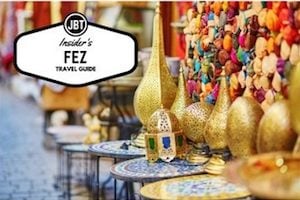
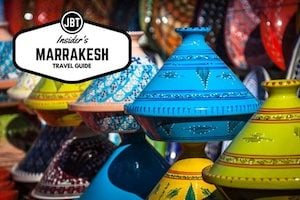
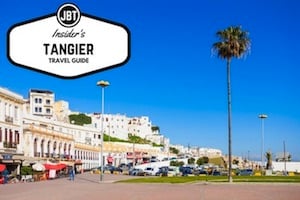
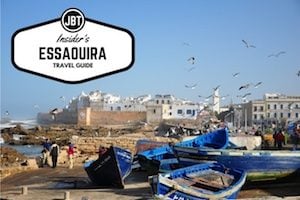


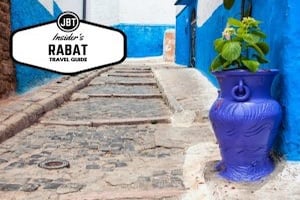
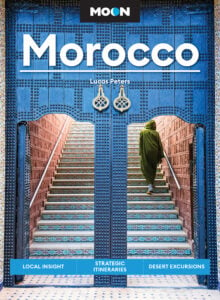
tagine and couscous sounds great! Save some for me 🙂
I was in Kenitra in the early 70″s and loved the brochette sandwiches. I haven’t found a good recipe. Brochettes were served with onion and tomato in a half loaf of round Moroccan bread with a very distinctive hot sauce. Any idea where I can get a recipe?